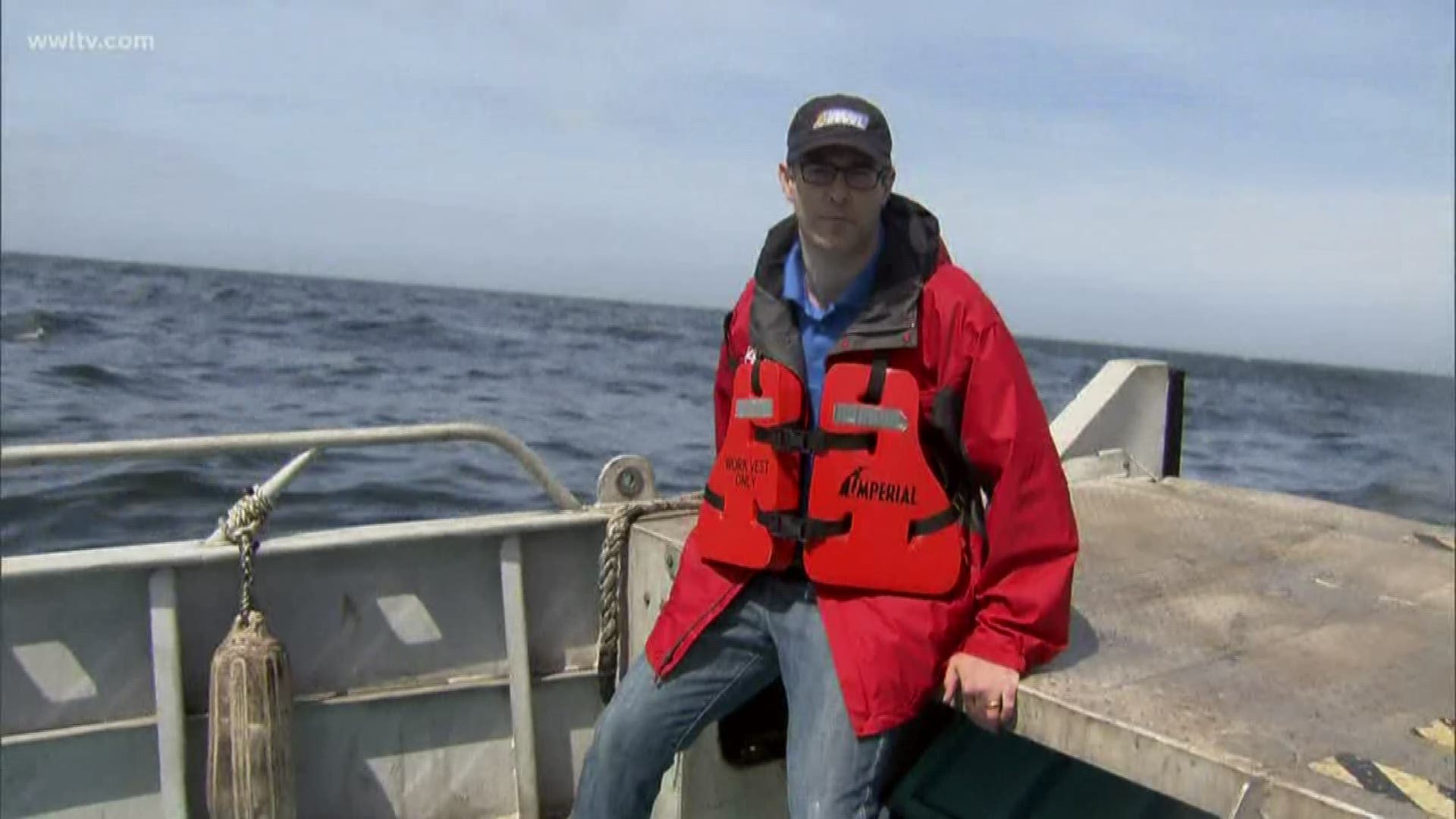NEW ORLEANS — An oil company responsible for the longest continuous offshore leak in U.S. history says the Coast Guard’s new efforts to contain the spill could be making the environmental damage decidedly worse.
New Orleans-based Taylor Energy Co. sent a letter to U.S. Coast Guard Capt. Kristi Luttrell on Thursday complaining about a sheen that stretched for 21 miles when Taylor’s contractor flew overhead on Wednesday. Taylor said its observers saw a 5-foot-wide strip of dark oil spreading for about 10 miles.
After consistently reporting a leak of only about 10 gallons a day for more than 14 years, Taylor has reported spikes in recent weeks of close to 2,000 gallons at the site 12 miles off the mouth of the Mississippi River.
RELATED: How big is the 15-year-old oil spill near the Mouth of the Mississippi? It depends on who you ask
Those reports have coincided with the arrival of a Coast Guard contractor at the site to start new containment operations, in which they hope to hook an approximately 60-foot-by-60-foot box-top-shaped device onto the old Taylor platform support structure that’s lying on its side 450 feet below the water’s surface. The containment device, known as a “containment dome,” is designed to capture the oil a few feet above the seabed and funnel it to the surface for safe collection.
But the Coast Guard and its contractor dispute Taylor's portrayal of the spill since operations began.
"Personnel on-scene are monitoring the water both surface and subsurface using a combination of drones and ROVs (remotely operated vehicles); no appreciable increase in surface expression (sheen) has been observed," said Coast Guard Petty Officer 1st Class Levi Read.
"We dispute their allegations that our actions have worsened the discharge," said Timmy Couvillion, owner of Couvillion Group, the Belle Chasse-based contractor hired by the Coast Guard to design and deploy the new containment equipment.
"We have taken appropriate measures not to disturb the sediment in anticipation of false accusations by (Taylor Energy Co.) in an attempt to divert their responsibility to the very contractor cleaning up their mess."
An old Taylor oil and gas production platform, known as Mississippi Canyon 20A, toppled in a mudslide caused by Hurricane Ivan in 2004. Oil has been leaking slowly ever since from a quarter-acre mud pit covering a spider-web-like system of 25 wells.
The Coast Guard’s Luttrell partially federalized the spill response in November, directing new containment efforts while forcing Taylor to pay the bill.
Taylor sued the Coast Guard and Couvillion Group, claiming they are trespassing on Taylor’s property and could cause more environmental harm by disturbing a tenuous situation.
Taylor President Will Pecue complained Thursday in his letter to Luttrell that the Coast Guard has been keeping the oil company in the dark about Couvillion’s work.
“By the persistent denial to disclose this highly relevant information to Taylor Energy, Coast Guard is creating a greater risk to the coastline of Louisiana and severely limits Taylor Energy’s ability to properly abate the source or cause of this greater sheen volume,” Taylor President Will Pecue wrote.
Timmy Couvillion also disputed Taylor's method for estimating sheen size from a plane.
He called a recent court filing by Taylor an “unconvincing attempt to utilize its own ‘scientific’ data to taint the public opinion of those charged with containing the oil under the auspice of environmental concern.”
Taylor has spent almost half a billion dollars trying to stop the leak, plugging the nine wells it thought were actively leaking, removing the top of the downed platform and trying to capture oil that escaped into the Gulf waters. But nothing has worked.
For more than a decade, the Coast Guard, government scientists and Taylor representatives worked together to conclude that the oil was coming from remnants trapped under the mud and any further drilling or dredging would be too risky. They decided it would be better for the environment to simply monitor the leak with overflights.
But environmental groups and some scientists disputed Taylor’s claims that only 10 gallons of oil had been leaking each day. Suddenly, the government changed its position last fall, deciding the spill rate was likely hundreds of gallons a day and that oil was probably leaking from at least one of the 16 wells Taylor has not yet plugged.
Taylor says it only collected a total of 100 gallons of oil over the last 15 years because only dark oil can be skimmed from the surface and dark oil is rarely visible. Now, the company says dark oil streaks are regularly visible during their overflights. Scientists and environmentalists who have visited the site over the last several years, however, say they have seen patches of dark oil during calm days. Videos from 2016 and 2018 show scientists scooping up brown clumps of oil at the site.
When WWL-TV visited the site in January and March, the water was choppy both days, there was a rainbow and silvery sheen but no dark oil was visible.

